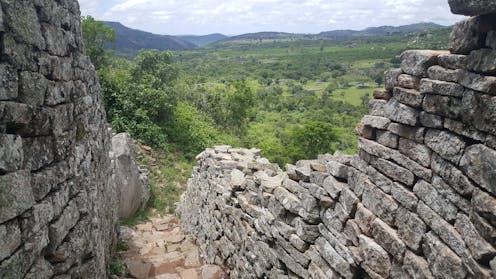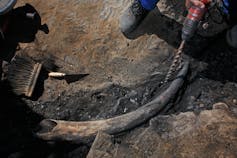
Archaeology is fun. It’s so much fun that sometimes people do not treat it with the seriousness it deserves. Studying the past, through what people leave behind, can offer insights into some of the world’s challenges – like hunger, health, and protecting the environment.
Some of the most impressive archaeological sites in the world include Great Zimbabwe, the Egyptian Pyramids and the Great Wall of China. Side by side with these very old and massive structures are sediments, old bones, seeds, pottery, glass, metals and human skeletons. All yield clues about ancient environments, societies and economies.
Archaeological discoveries sometimes grab headlines: Howard Carter’s discovery of Tutankhamun’s tomb in Egypt in 1922, the Terracotta Army discovery by local farmers in China in 1974, the spectacular objects of Igbo Ukwu in Nigeria, the gold burials of Mapungubwe and the Staffordshire hoard in England are a few examples that come to mind.
At Great Zimbabwe, the excavation team I lead always discovers interesting things that show how this place was once connected across Africa and with India and China.
Read more: How we found the earliest glass production south of the Sahara, and what it means
But beyond being interesting, what is the value of these discoveries? The short answer is that they offer lessons from human experience. They show us different options that we could think about and modify to suit changing circumstances. Materials, land use, water storage, cultural practices and ways to manage health are just some of the kinds of options I mean.
Lessons from human experience
For example, of the many “gifts” that the Romans gave to the world, concrete is one of the most studied materials. It has the potential to reduce greenhouse gases known to cause global warming and climate extremes. Studies in design and engineering are showing that adapting Roman techniques can improve modern concrete formulations, making them durable and environmentally friendly.
And modern designers have been inspired by research into ancient tiles used in Asian regions such as Uzbekistan.
Learning from the past also promotes balanced approaches to sustainable farming practices. It can lead to responsible planetary stewardship. For example, we can learn about growing traditional crops such as millet and sorghum that are not only nutritious but also help in biodiversity conservation and heritage protection.
Clues to environmental changes can come from unexpected places. One of the most exciting archaeological discoveries I have worked on is the Oranjemund shipwreck. Diamond miners in Namibia stumbled on this in 2008 when dredging sand. A Portuguese ship had sunk in the 1530s and its cargo was on the seabed. Through international collaborations, we rescued 20 tons of copper, nearly 40kg of gold coins, 7 tons of unworked elephant tusks and many other items from the ship.

Work by teams bringing together different scientific techniques, such as stable isotopes and ancient DNA, identified the West African forest region as the source of the elephants hunted for their ivory. Most of that elephant population has since disappeared, through unsustainable consumption.
Read more: Fossil tracks and trunk marks reveal signs of ancient elephants on South Africa's coast
Archaeology also shines a light on the different ways human societies have organised themselves. For example, discoveries of evidence showing the migrations of different groups of people in Africa show the limitations imposed by the national borders created by colonial powers. Before European colonialism, African peoples were connected in different ways. Archaeology presents this African heritage and offers social cohesion as an alternative to xenophobia.
Multidisciplinary discovery
Another value of archaeology is that it uses multiple fields of knowledge to discover and interpret findings. Studies of precolonial African trade, for example, use multiple sources and techniques such as oral and documentary history, languages and archaeological materials analysis to show that communities in southern Africa were networked with each other and those in central and eastern Africa. Archaeologists recovered iron gongs produced in central Africa at Great Zimbabwe together with a coin minted at Kilwa on the Indian Ocean coast. This shows movement of resources and people within Africa – which is once again a goal through the African Continental Free Trade Area.
As heritage, archaeological discoveries also have economic and intrinsic value. Some of the world’s most visited tourism destinations are archaeological sites – Machu Picchu in Peru is one. This goes against the perception that archaeology is all about discovery for discovery’s sake and that it is a luxury in a hard-pressed world.
Archaeology matters because lessons from the past can put solutions on the table, mixing excitement with problem solving.
Shadreck Chirikure receives funding from the British Academy, the University of Oxford, the National Research Foundation of South Africa, and the University of Cape Town. He is affiliated with the University of Cape Town.
This article was originally published on The Conversation. Read the original article.







